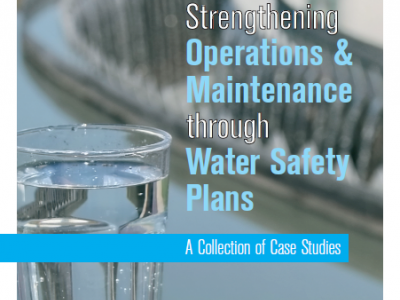
IWA and WHO are pleased to announce the upcoming release of a new version of Strengthening Operations & Maintenance through Water Safety Planning: A Collection of Case Studies. The document will be formally launched during IWA’s World Water Congress, held in Tokyo on 16-21 September 2018.
This document presents several case studies from six countries around the world that highlight the Operation and Maintenance (O&M) benefits derived from WSP implementation. WSPs are valuable tools that can be used to strengthen O&M programmes and result in a wide range of improvements across systems of various types, sizes and resource levels globally.
What is the relationship between WSPs and O&M?
Firstly, O&M are central to successful implementation of WSPs. Identifying O&M-related hazards, determining and validating associated control measures, monitoring those control measures, preparing standard operating procedures (SOPs) for O&M processes and ensuring sufficient training for O&M staff are essential components of a WSP. The full benefits of a WSP cannot be realised without these key O&M processes.
Furthermore, WSPs drive O&M improvements. The risk assessment process that underpins WSPs is a mechanism to identify any gaps in a water supply system’s O&M practices and the control measures required to be in place and functioning to manage risk to drinking-water quality and service delivery. This gap analysis becomes the platform to drive O&M process improvements.
The case studies presented in this document demonstrate that significant O&M improvements have been achieved as a direct outcome of WSP implementation. To learn more, we welcome your participation at the IWA/WHO Climate resilient water safety and security planning session (18 September 2018, 10:30-12:00) and encourage you to check the Water Safety Portal library in the coming months to access the document directly.
